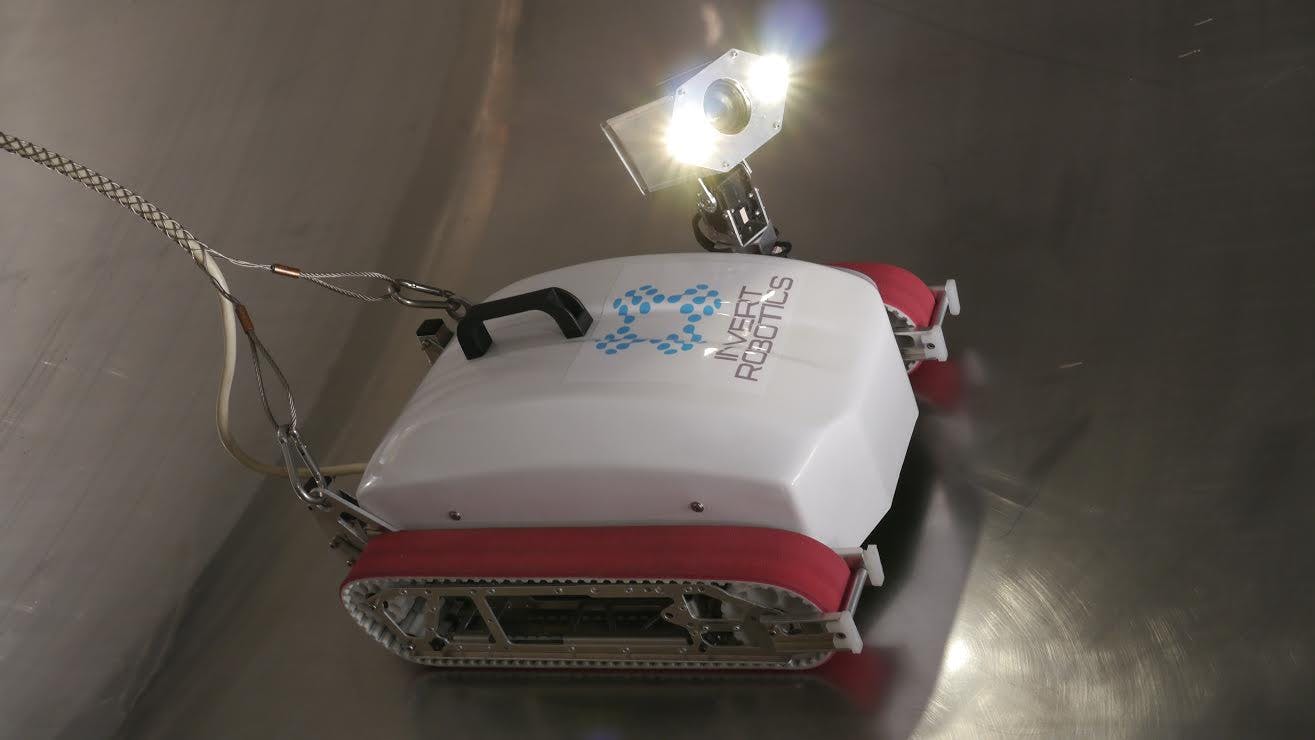When it first launched, NZ start-up Invert Robotics had a “solution in search of a market”. Today, it’s enjoying significant year-on-year growth, having adapted it robotics technology for use by multiple industries across multiple countries
Founded out of New Zealand’s University of Canterbury in 2011, Invert Robotics employs robots which are capable of climbing various surfaces, including non-magnetic (e.g. stainless steel), to provide inspection services to clients with high-value and mission-critical assets.
The technology was developed by founder and CTO James Robertson, who transformed the initial concept into a viable product with the assistance of Powerhouse Ventures – a startup VC firm with a focus on commercialising university-generated IP in Australia and New Zealand.
According to Neil Fletcher, the managing director of Invert Robotics, the use of robotics addresses the pitfalls of traditional human-led inspections in a range of industries.
“We’re reducing (and even sometimes eliminating) risks to worker health and safety, particularly those associated with physically entering hazardous environments, such as food processing equipment, and working from heights,” he told Dynamic Business. “We’re also reducing the potential for food contamination and helping clients make the inspection process more efficient – by completing robust, high-quality inspections significantly faster, there’s reduced downtime for assets.”
Invert Robotics has clients in the food and beverage space, including five of the world’s top six dairy companies, whose silos are stainless steel and thus cannot be scaled by traditional magnetic robots. It also provides services to the resources sector, including the gas and oil industries.
“Some industries lend themselves to the implementation of robotics more than others,” Fletcher said. “But more and more industries are benefitting from robotics as the technology improves. We are in the final stages of deals with both a large international airline and a large aircraft maintenance organisation, and we have our sights on façade cleaning (i.e. glass covered sky scrapers), energy, petrochemical and mining industries – all of whom use large, mission critical non-magnetic assets. Our robot is generally easily adapted, normally by adding new detection tools on to it or by minor development work to address the new demands.”
Although Invert Robotics is headquartered in Christchurch, Invert Robotics has an office in the Netherlands and three more are being opened across Germany, France and the UK. The company’s products are also used in Australia, Belgium, Ireland, Denmark and Indonesia and it has secured its first clients in Asia, with discussions now underway to launch in the Americas.
According to Fletcher, since launching into Europe in 2016, the company has enjoyed ‘extraordinary’ growth in size and client numbers, and its revenue has ‘climbed dramatically’, with its result for FY17 400% greater than FY16. “We’re on track to expect the same increase in FY18,” he added.
Fletcher attributed the company’s success to date to a combination of internal expertise and market conditions in Europe.
“We’ve been able to demonstrate a point of difference over our competitors in terms of time, quality and cost,” he explained. “This has been supported by our technology roadmap for the short and long term and our ability to deliver against that roadmap PLUS careful examination of the markets we’re addressing, including how to enter them and execute entry in the best possible way.
“Demand for our robot in Europe has been particularly strong due to a) stricter adherence to health and safety regulations, b) our ability to have the mission-critical assets back on line sooner, and c) the fact that product represents a significant innovation in a market where consumers are always looking for new technology and look for future benefits.
“We’re fortunate that James is a fantastic innovator who is always looking to solve problems. The conundrum of having a product that was, at least initially, a solution in search of a market doesn’t quite work really appealed to James’ highly technical brain and his desire to see things working seamlessly.
“We also have phenomenal staff who not only align with our vision but really advance the company by identifying and winning strategic customers. This has been invaluable because a challenge for us in the past has been getting non-believers to even take a look at our robot – many didn’t believe it could stick to (let alone move smoothly along) surfaces as there is no other robot capable of doing so. We have found that once people see our robot in operation, they are quickly converted. Operating a business from New Zealand, when most of its growth and activity in in Europe is also a challenge, which we’ve worked to address with the strong staff base we employ.”
It has been 14 months since Fletcher joined Invert Robotics, having been drawn to “the people and the atmosphere and the challenge of helping lead a growing startup with an innovative product”. He added, “Every day is a new challenge with new opportunities, both in terms of maturing and growing the company as well as commercial opportunities. It’s a roller coaster but it’s a great ride!”

